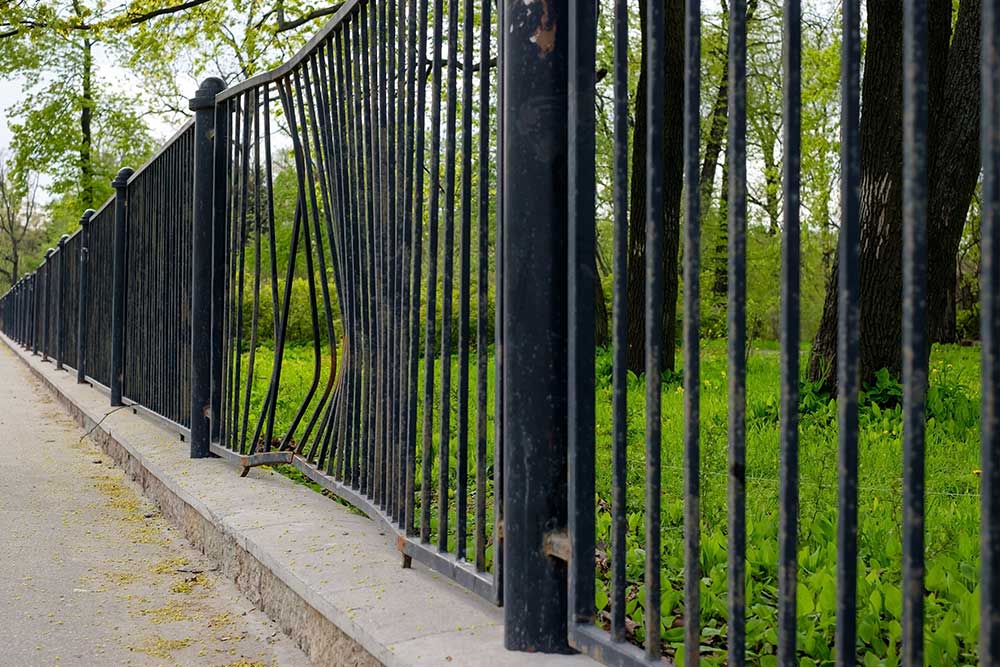How to Repair a Damaged Aluminum Fence

An aluminum fence is a popular choice for homeowners due to its durability, low maintenance, and elegant appearance. However, even the strongest aluminum fence can suffer damage over time from weather conditions, accidental impacts, or regular wear and tear. Fortunately, repairing a damaged aluminum fence is often a straightforward process that can restore its strength and visual appeal without the need for a full replacement. This article will guide you through the essential steps for identifying damage, choosing the right repair approach, and performing the fix with lasting results.
1. Inspect the Damage Thoroughly
Before starting any repairs, it’s important to assess the extent and type of damage your aluminum fence has sustained. Walk along the fence line and look for:
- Bent or dented panels
- Loose or broken rails
- Damaged or missing pickets
- Rust spots (although rare with aluminum)
- Posts that are leaning or unstable
Take note of all problem areas so you can gather the correct tools and materials for the job. Sometimes, minor issues like a loose screw or a small dent can be fixed easily, while larger damage may require partial panel replacement.
2. Gather Tools and Materials
Once you understand the type of repair needed, collect the necessary supplies. Depending on the issue, you may need:
- Replacement panels or pickets
- Aluminum welding epoxy or adhesive
- Wrenches and screwdrivers
- Rubber mallet or hammer
- Drill with bits
- Rust remover and paint for touch-ups
- Protective gloves and eye gear
Make sure the replacement parts match your existing aluminum fence in style, size, and color to maintain a seamless look.
3. Straighten Bent or Dented Sections
Bent pickets or rails are a common issue, especially if the fence has been impacted by a lawn mower, falling branch, or vehicle. If the bend is minor, you can usually fix it without replacing the component.
- Use a rubber mallet to gently tap the bent area back into place.
- For more stubborn bends, you can use a pair of pliers or a vice grip for better control.
- Be cautious not to apply too much force, which could crack the aluminum or worsen the damage.
If the section cannot be straightened, it’s best to replace the damaged part.
4. Replace Broken Panels or Pickets
If a picket or panel is broken beyond repair, replacing it is the most effective solution.
- Begin by unscrewing or unbolting the damaged piece from the rest of the aluminum fence.
- Insert the new panel or picket in its place, ensuring it fits securely.
- Use corrosion-resistant screws or fasteners to hold the new part in position.
- Tighten all connections and check for stability.
If you’re working with an older fence model, finding an exact match might be difficult. In such cases, consult the original manufacturer or take a sample to a fence supplier for help.
5. Fix Loose or Wobbly Posts
Posts provide critical support to the entire aluminum fence structure. If a post is loose or leaning, it needs immediate attention.
- Start by digging around the base of the post to expose the concrete footing.
- If the post is loose but the concrete is intact, simply add more concrete or post mix around it and allow it to set.
- For a completely broken or rotted post base, you’ll need to remove the post and replace both the aluminum and its foundation.
- Ensure the new post is set straight using a level before the concrete sets.
This repair can dramatically improve the overall stability of your fence.
6. Address Surface Damage and Touch-Ups
Although aluminum doesn’t rust like iron, it can still suffer from scratches, oxidation, or paint fading. Here’s how to fix surface issues:
- Use a rust remover or fine-grit sandpaper to clean the affected area.
- Wipe down the surface with a damp cloth to remove debris.
- Apply a matching outdoor-grade paint or aluminum fence touch-up paint.
- Allow it to dry completely before exposing it to moisture or sunlight.
Touching up your aluminum fence not only improves its appearance but also adds a protective layer against future damage.
7. Prevent Future Damage
Once your aluminum fence is repaired, consider steps to prevent further damage:
- Trim tree branches near the fence to avoid falling limbs.
- Avoid leaning heavy objects against the fence.
- Regularly inspect for loose screws or fasteners and tighten as needed.
- Clean the fence periodically to prevent buildup of dirt and debris.
Conclusion
Repairing a damaged aluminum fence doesn’t have to be overwhelming. With the right approach, tools, and materials, you can restore your fence’s integrity and aesthetics in just a few hours.
Whether you’re dealing with a bent rail, a broken picket, or a leaning post, addressing these issues early will help extend the lifespan of your aluminum fence and maintain your property’s curb appeal. Always remember—proper maintenance and timely repairs are key to keeping your aluminum fence in top condition for years to come.


